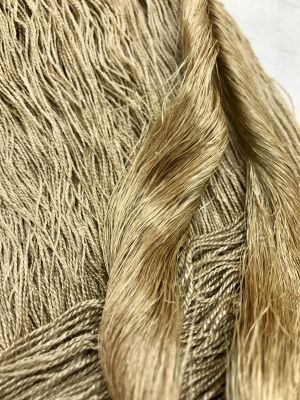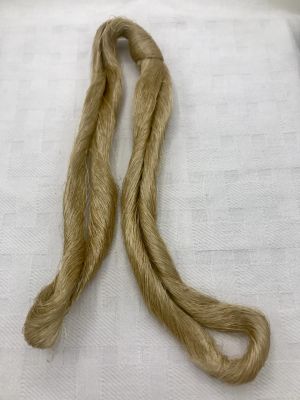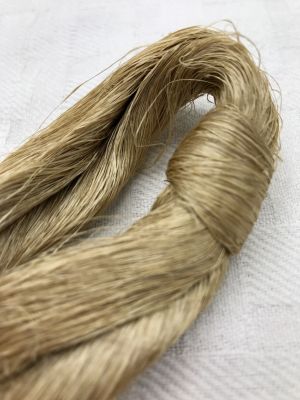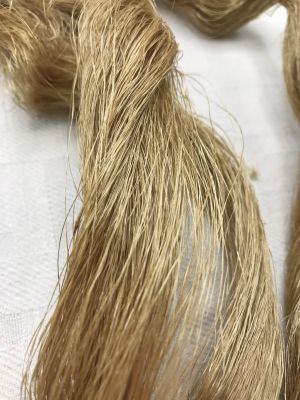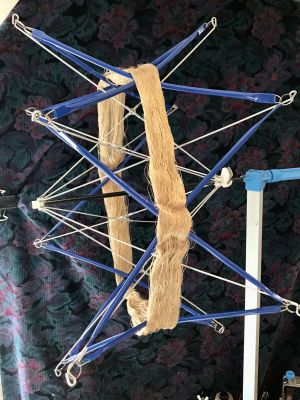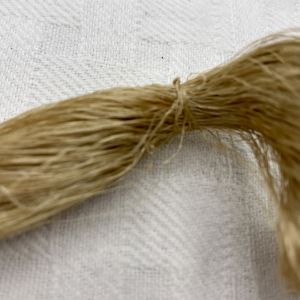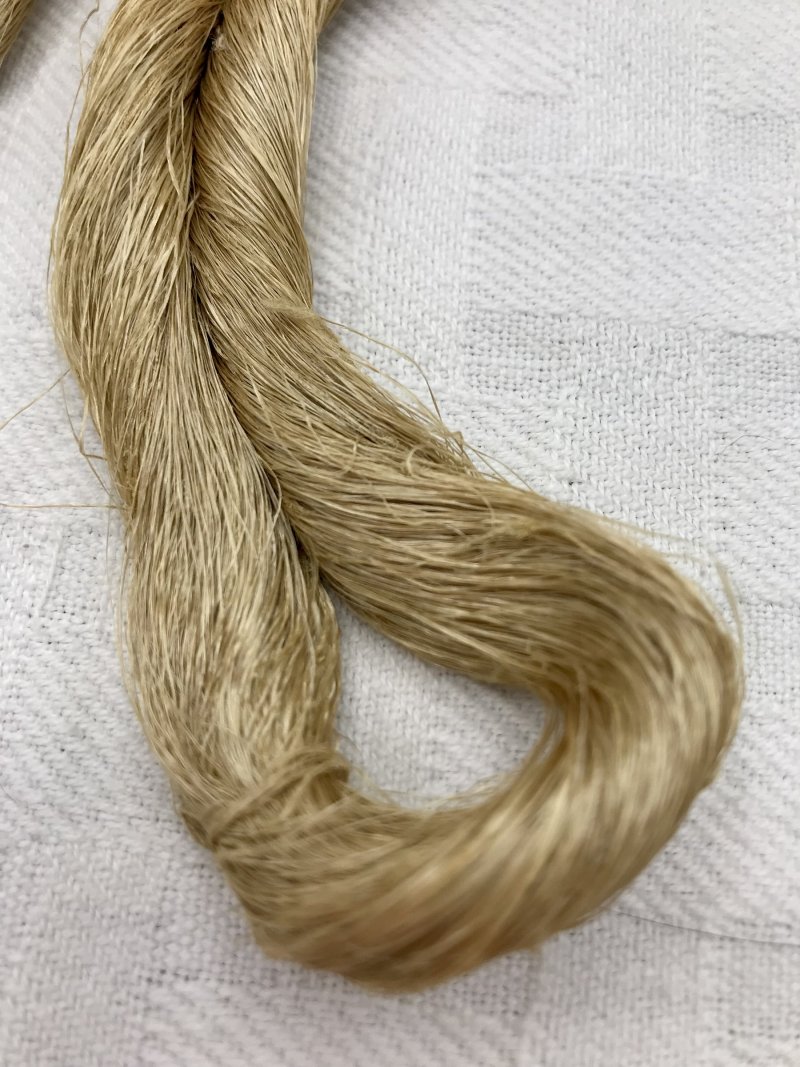
photo above: Reeled Muga Silk, 60-80 denier
My mantra is "use your good stuff now." But some things are so special, just having them close gives as much joy as using them. Reeled Muga Silk falls into this category for me.
MUGA SILK
Muga silk is naturally a rich gold color and was traditionally reserved for royalty. It's beautiful as a spun silk, but when you see it reeled, it really looks like liquid gold! (see photo below of Reeled Muga silk setting on top of our Spun Muga Silk).
This silkworm is ONLY found in the microclimate of the Assam region in India. Muga silk is relatively rare.
The Antherea assama (muga) silkworm is a ‘cousin’ to the Antherea mylitta (tasar or tussah) silkworm. Both silkworms eat leaves that contain tannin--the same substance in tea that stains the cup--so both silks are naturally a golden color.
The caterpillar producing muga silk eats leaves from Som (machilus bobycine) or Soalu (litsaea polyantha). The tussah silkworm eats the leaves from one of these trees--Arjun (terminalia argun), Asan (terminalia tomentosa), or Oak.
REELED SILK
The silkworm spins his cocoon (from the outside in) without stopping. He produces unbroken, continuous silk filament. Reeling is the process of "unwinding" the silk from the cocoon. This is time consuming and tedious.
Because the silk is reeled, there are longer expanses of smooth silk to reflect light. This makes reeled silk shinier than spun silk. With Muga, this intensifies the golden color (see photo below of reeled Muga silk vs spun Muga silk)
REELED MUGA SILK
Our Reeled Muga Silk skeins have been reeled by the tribal people. As with anything hand-wrought, there will be variances. The silk is 60-80 denier (most manufactured reeled silk will have a 2-denier range).
How thick is 60-80 denier, you ask? It's similar to our 120/2 spun silk. So thin. Definitely for all you fine-thread weavers. Or for fine hand-stitching.
updated 12/5/2022: I've weighed all the remaining skeins and they range between 8-20 grams. As always, we weight each skein and charge for the grams of silk you receive. When you order, please indicate if you prefer a bigger or a smaller skein (the price on the web will be for a 20g skein).
HANDLING THE SKEINS
First, make sure your hands are smooth--I thought I was in good shape, but a strand of reeled silk grabbed onto an invisible rough spot on my cuticle. Once disentangled, I used our hand-crafted lotion bar--I love this--and all was good going forward.
There are no skein ties--the skeins have an overhand knot to hold the silk together (see photos below).
I undid the knot. The silk skein wants to roll inward (see photo below). After unsuccessfully trying to smooth the silk and remove the roll, I decided to let it rest on my skein winder.
As with all silk, we recommend having your swift attached at 90 degrees from "normal", so the swift spins like a Ferris wheel (NOT around like a merry go round) (see photo below)
We have both wooden and wire swifts. The wire swifts are lighter weight, requiring less tension to turn. Because the Reeled Muga Silk is so very fine, I opted to use the metal swift.
I positioned the skein on the swift and gently opened it far enough to expand the skein but without putting pressure on it. I gently untwisted the silk. After resting just 15 minutes, I could tell this was going to make the silk happier. Which makes me happier-LOL!
I opened the swift a bit more, to put a bit of tension on the silk. I plan to let it rest for 24 hours.
After that? I'll try hand-winding it directly from the swift onto a bobbin, so it's ready to use after I've dreamed up a fine-threads project. Silk is strong, but this is super fine (compared to what I'm used to) so I'll proceed slowly and carefully.
When I'm ready to start, I'll find where the ends are looped around the skein and tied (see photo below) and find my end.


